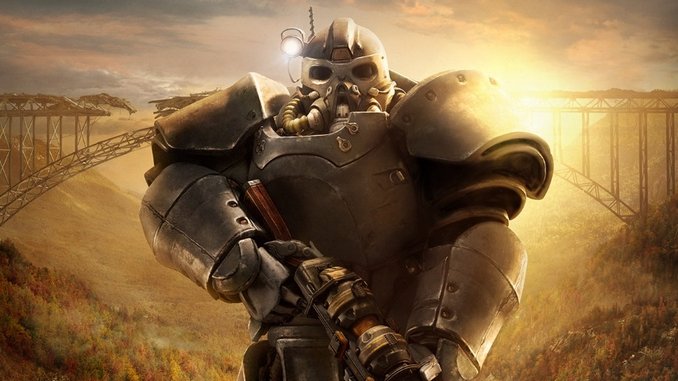
The Fallout 76: Wastelanders Update is a Step in the Right Direction
by Holly GreenOf all the things I expected from Fallout 76, I didn’t necessarily expect it to get better. Not because of the game itself per se, but more because the past year or so for Fallout 76 has been rough. From microtransaction missteps to hacker shenanigans, there have been so many things to fix, there hardly seems time to do any major updates. It seemed only downhill from here.
The Wastelanders update, released in April, promised a return to normalcy. Fallout 76 breaks a lot of established series conventions, but the absence of flesh and blood characters was one of its biggest problems. Without any living characters, Appalachia felt too lawless to focus on a cohesive linear narrative. Holotapes, robots, computer terminals, and other forms of static mission delivery replacing human NPCs imbued the early days of Fallout 76 with a sense of nihilism. With no one affected by or even watching your actions, what did anything really matter? And while that lack of supervision is perfect for a sandbox game, it was devastating to the game’s structure. It is too difficult to absorb a mission or storyline amid a constant barrage of new tasks, not to mention the threat of new enemies or hostile players.
It’s not the type of problem I thought could be addressed in a single update. After all, the massive-multiplayer sandbox format was never a good fit for the series to begin with. And yet the Wastelanders update fixes so much at once, it’s clear how much the absence of NPCs was really the problem. Their addition to the game, a hefty overhaul that includes random NPCs in addition to quest characters, necessitates certain changes. Safe zones, for example, put events on pause so the player can engage in dialogue. Not only does this change afford the audience opportunity to process key story details that once got lost in the shuffle, but the NPCs also imbue context that restores the game’s tone. Together, they add new meaning to the game’s world, and the mechanics within them.
This core experience shift can perhaps best be explained by exploring the difference between authored and player and systems stories. As discussed by The Long Dark’s Raphael Van Lierop in his 2018 GDC talk, “A Long Dark Road: Blending Player and Authored Story in a Sandbox Survival Game,” authored stories are an architectural construct written with the purpose of creating context, whereas player stories are generally also system stories, told by an intersection of the player’s actions and the mechanics, and the meaning they attribute to those events.
These two means of storytelling in virtual spaces are appealing for different reasons. And previously, Fallout relied more on one than the other. As a series, Fallout has always pushed the boundaries of player freedom by allowing them vast opportunity to explore. But it also relied on methods of micronarrative delivery, ones that were unique to the player. Character customization, and the mission paths that would branch to accommodate them, allowed for those player and systems stories. But while those were an aspect of the designers’ worldbuilding, the games also had the strong spine of a linear authored story. It provided structure and gave the player something to wander back to when they get bored of amusing themselves. It was a balance of both narrative worlds.
Fallout 76, meanwhile, focuses heavily on player and systems stories. It does have a linear narrative, but the core experience consists mainly of the random interplay between players and mechanics. Limited time events and other single-opportunity occasions force regular engagement on the game’s time table. Quicksave, a staple of past Fallout games that enabled trial-and-error through the game’s trickier dialogue sequences, is gone. And there are few locations that can be visited with uninterrupted privacy. In this context, the distaste for Fallout 76’s new format from older fans of the series makes sense. That tentative and reverent tone the series had, once enhancing its post-apocalyptic themes, can be hard to come by. Without the improved pacing afforded by the safe zones of Wastelanders, it might have never come back at all.
This shift in the game’s core experience can be tracked in the responses from people who enjoy Fallout 76. If you ask them, you’ll hear that it’s not about the story, it’s about the time they spend with their friends or against their opponents. Some games (from Fortnite to World of Warcraft) are not games at all, so much as they are a place to hang out. Whether you play Fallout 76 antagonistically or cooperatively, what is bringing you back is people. It makes sense then that virtual people, those given a backstory that adds context to the world, gives an additional layer of meaning. It’s as if players need to know that their actions have an impact on the universe around them, and having human beings to talk to and receive tasks from is a part of that.
By introducing NPCs, Fallout 76 now can have it both ways. It can effectively tell a story while also establishing a place where players can create their own. It’s finally, as many people desired, both a single and multiplayer game. For that, Wastelanders is a strong step in the right direction.
Holly Green is the editor-at-large of Paste Games and a reporter and semiprofessional photographer. She is also the author of Fry Scores: An Unofficial Guide To Video Game Grub. You can find her work at Gamasutra, Polygon, Unwinnable, and other videogame news publications.